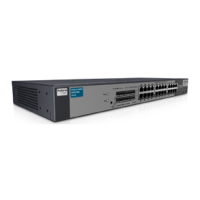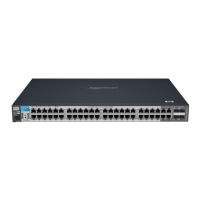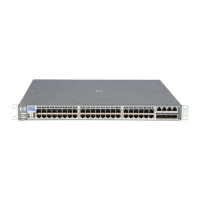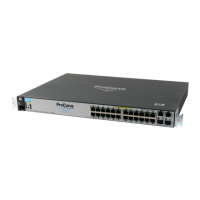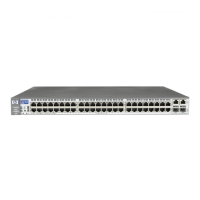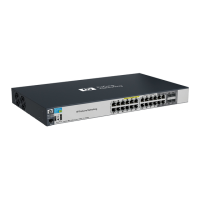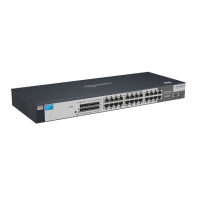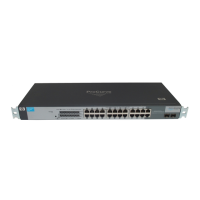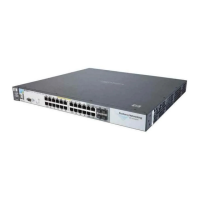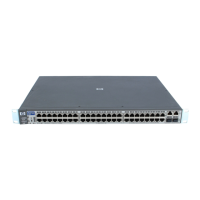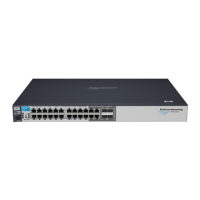
Do you have a question about the HP ProCurve Series 2810 and is the answer not in the manual?
| Layer | Layer 2 |
|---|---|
| Form Factor | Rack-mountable |
| Power Supply | Internal |
| Jumbo Frame Support | Yes |
| Uplink Ports | 4 x dual-personality ports (10/100/1000 or mini-GBIC) |
| Switching Capacity | 48 Gbps |
| Throughput | 35.7 Mpps |
| Forwarding Rate | 35.7 million pps |
| Management | Web, SNMP, CLI |
| MAC Address Table Size | 16000 entries |
| Routing Protocol | Static routing |
| Features | VLAN support, QoS, IGMP snooping |
| Operating Temperature | 32°F to 113°F (0°C to 45°C) |
| Operating Humidity | 15% to 95% non-condensing |
| Model | HP ProCurve Series 2810 |
| Ports | 24 x 10/100/1000 (Gigabit) |
Describes how to manage and configure advanced traffic management features on your switch.
Explains conventions for command syntax and displayed information.
Provides quick steps for IP addressing and switch setup.
Describes configuring and using static, port-based VLANs on switches.
Explains static VLANs, their manual configuration, names, and port assignments.
Details options for assigning individual ports to static VLANs, including GVRP impact.
Details configuring VLAN parameters using the Command Line Interface (CLI).
Explains how VLAN tagging enables multiple VLANs on a single port.
Describes GVRP and its relation to VLANs and switch interfaces.
Introduces GVRP (GARP VLAN Registration Protocol) and its standards.
Explains how GVRP enables dynamic VLAN creation and port joining.
Details per-port options for handling unknown VLAN advertisements in GVRP.
Describes procedures for viewing, enabling, disabling, and specifying port handling for GVRP.
Describes multimedia traffic control with IGMP and per-port configuration.
Lists IGMP features, default settings, and CLI/Web configuration availability.
Provides CLI commands for configuring and displaying IGMP settings.
Explains the IGMP protocol, message types, and how switches manage multicast traffic.
Explains the problem of delayed leave and the automatic fast-leave feature.
Explains how multiple-instance spanning tree operation (802.1s MSTP) works.
Details MSTP, its VLAN approach, and how it maps instances.
Explains MSTP mapping of paths through instances and regions.
Outlines general steps for configuring MSTP, including global parameters.
Details CLI commands for configuring per-port MSTP parameters.
Introduces QoS, network controls, traffic handling, and prioritization.
Details five QoS types for packet matching and their evaluation precedence.
Explains configuring QoS for outbound traffic using various QoS types.
Details QoS Type Precedence 1 for UDP/TCP traffic based on port numbers.
Details QoS Type Precedence 3 for IPv4 traffic using ToS IP-Precedence or Diffserv mode.
Describes how to use your network to stack switches without specialized cabling.
Explains how switches join a stack and how the Commander provides access.
Outlines general rules for stacking, including Commander, IP subnet, and member limits.
Covers overview, steps, options, and processes for setting up and managing stacks.
Provides CLI commands for viewing stack status and configuring stacking.

